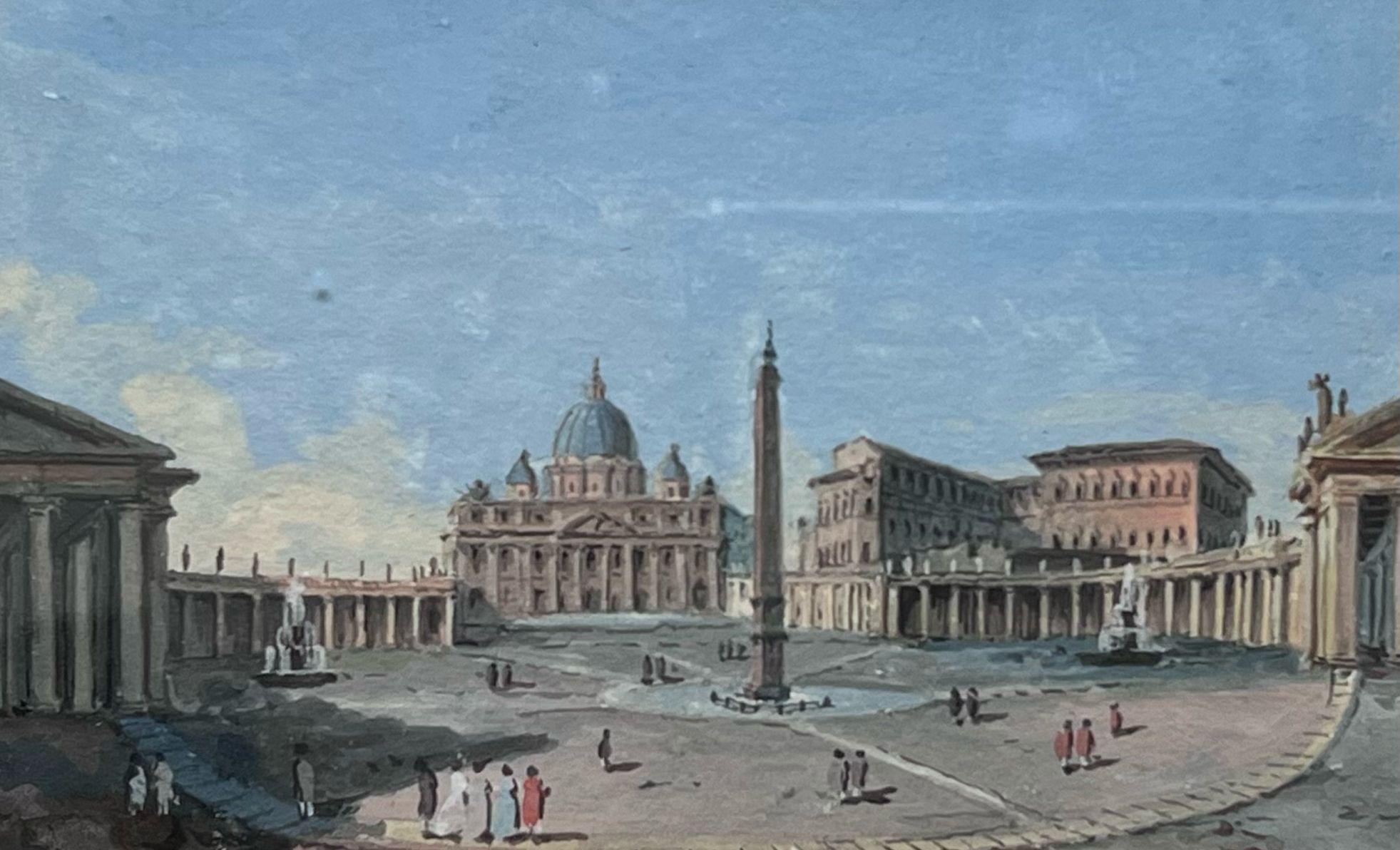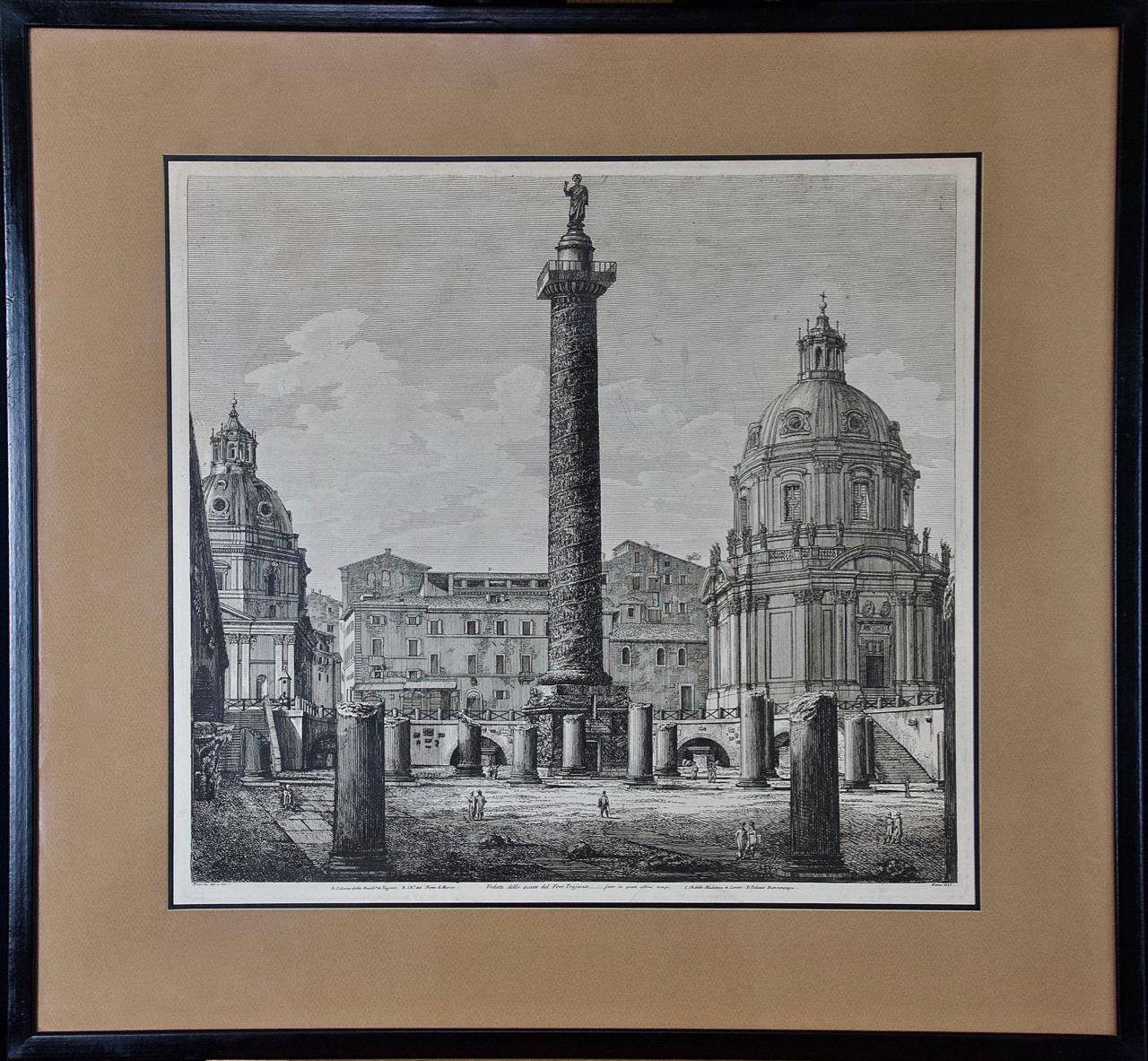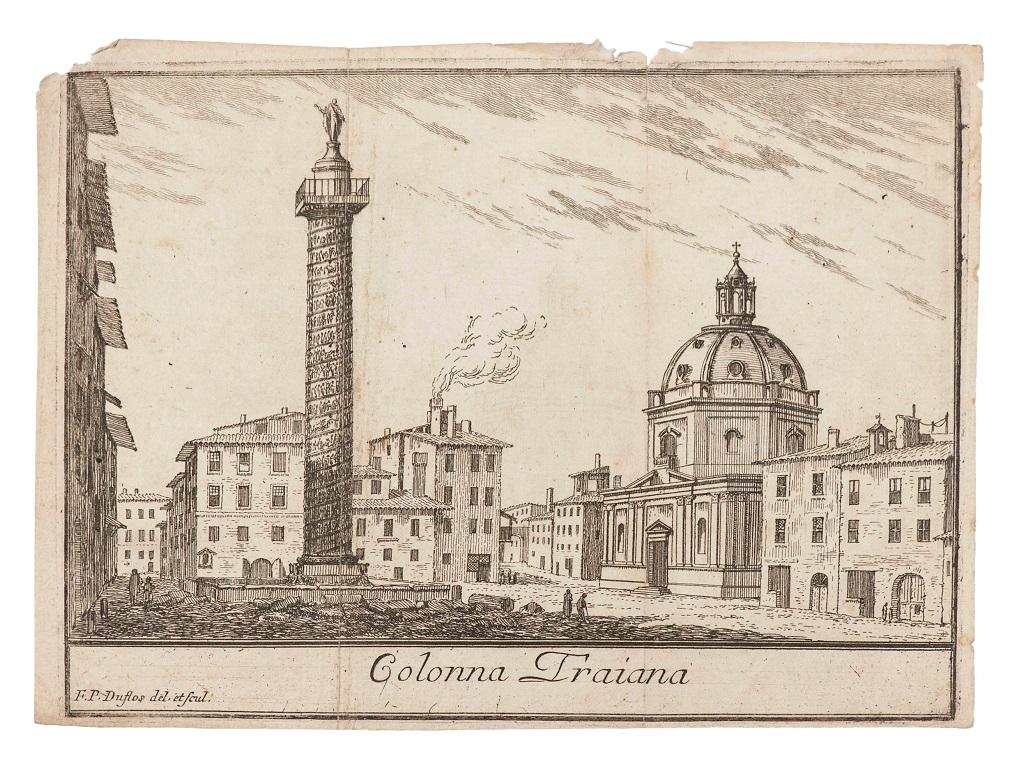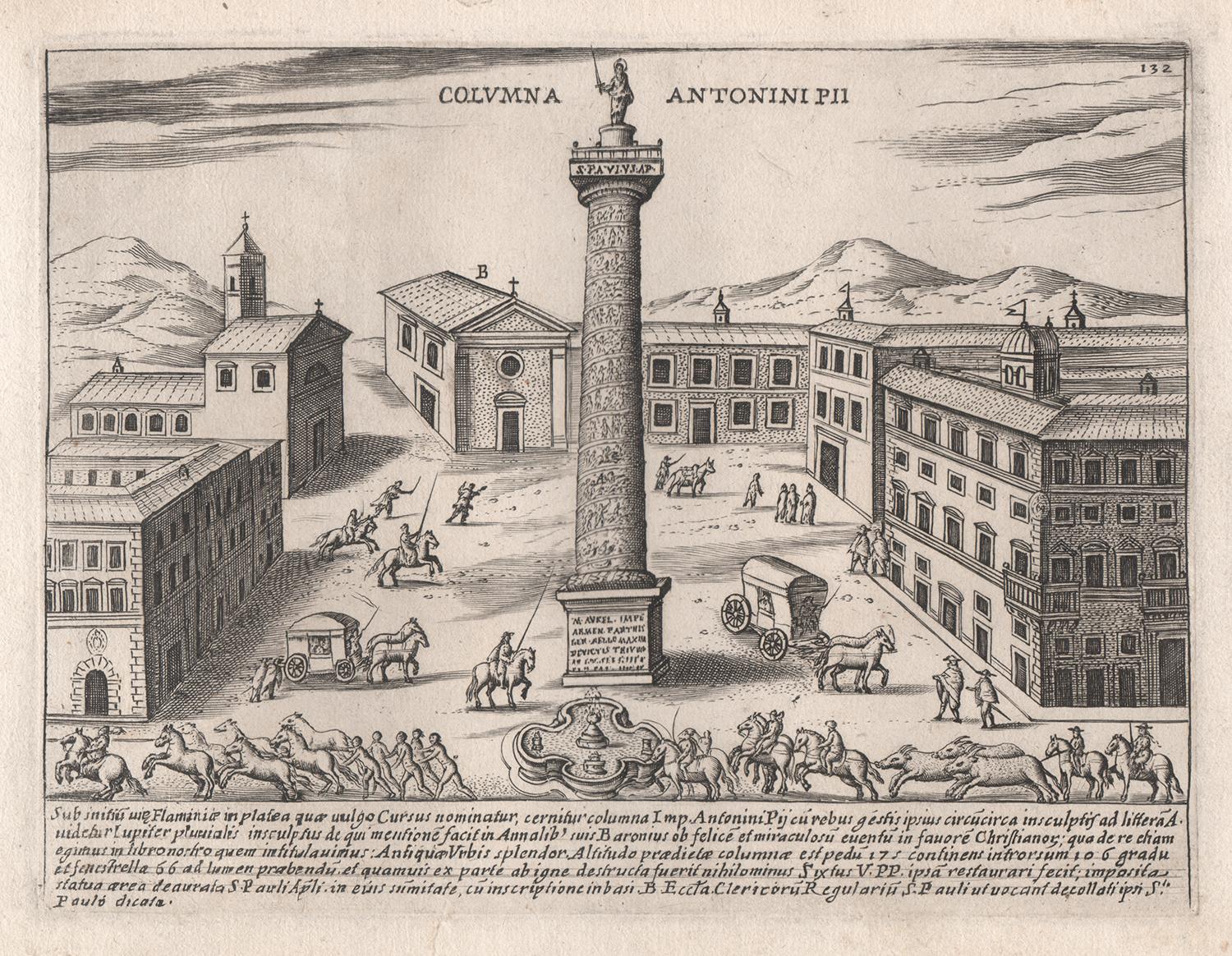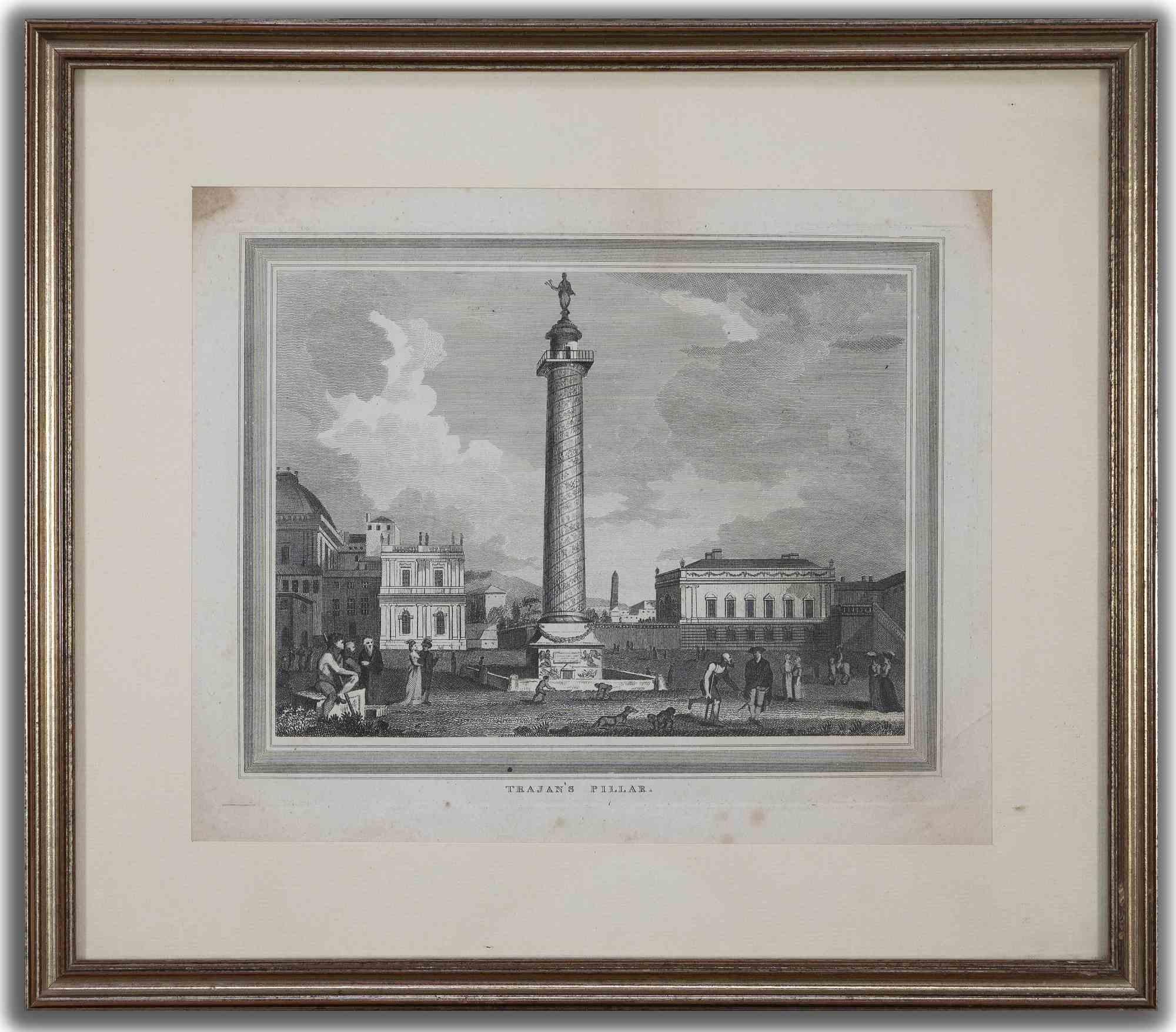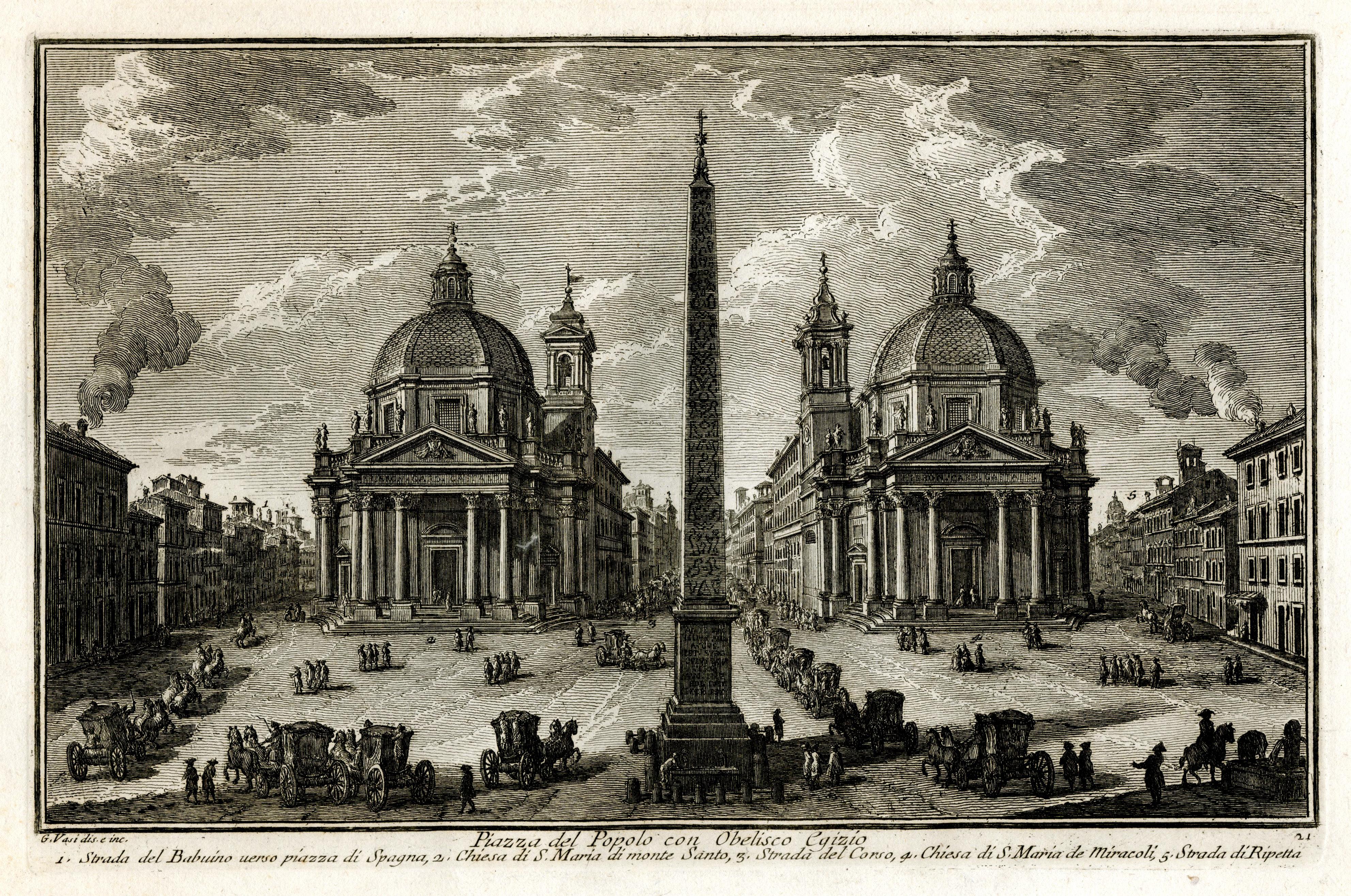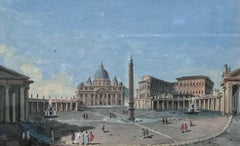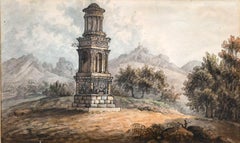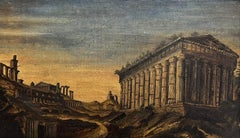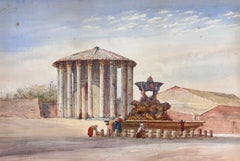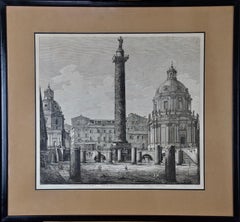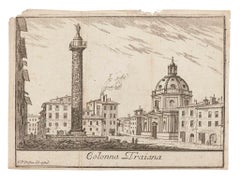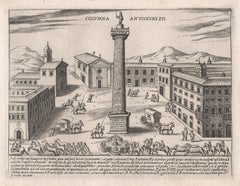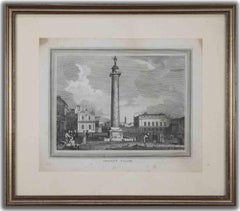Items Similar to Trajan’s Column View Rome Early 19th Century Grand Tour Gouache on Paper
Want more images or videos?
Request additional images or videos from the seller
1 of 6
ItalianTrajan’s Column View Rome Early 19th Century Grand Tour Gouache on Paper
$1,099.72
$1,374.6520% Off
£800
£1,00020% Off
€936.93
€1,171.1620% Off
CA$1,535.93
CA$1,919.9120% Off
A$1,665.75
A$2,082.1920% Off
CHF 874.92
CHF 1,093.6420% Off
MX$20,233.47
MX$25,291.8420% Off
NOK 10,948.18
NOK 13,685.2320% Off
SEK 10,308.33
SEK 12,885.4120% Off
DKK 6,994.84
DKK 8,743.5520% Off
About the Item
This charming gouache on paper painting, from the early 19th century, presents a detailed view of Trajan’s Column in Rome, a historically significant landmark dating back to ancient Rome. Likely a memento of the Grand Tour, this work captures one of the most celebrated monuments visited by European aristocrats during their travels across Italy, symbolizing their intellectual and cultural pursuits.
The scene centers on Trajan’s Column, a remarkable Roman triumphal column erected to commemorate Emperor Trajan’s victory in the Dacian Wars. Surrounding the column are the twin domes of Santa Maria di Loreto and Santissimo Nome di Maria al Foro Traiano, with their Baroque elegance standing in contrast to the ancient Roman structure. The artist has captured both the classical and architectural beauty of this iconic site, with meticulous attention to the interplay of light and shadow across the buildings and the Roman forum.
Medium: Gouache on paper, mounted in a frame
Frame dimensions: 7 x 9 inches
Image dimensions: 4 x 5 inches
Condition: Very good, with vivid colors and minimal signs of wear, preserved behind glass
Provenance: From a private collection
Framing: Elegantly framed and ready for display
This work of art, with its rich historical subject matter and ties to the Grand Tour, is perfect for collectors of European landscapes and Roman history. It encapsulates both the grandeur of ancient Rome and the artistic taste of travelers in the early 19th century.
- Creator:Italian
- Dimensions:Height: 7 in (17.78 cm)Width: 9 in (22.86 cm)
- Medium:
- Movement & Style:
- Period:
- Condition:
- Gallery Location:Cirencester, GB
- Reference Number:1stDibs: LU509313224292
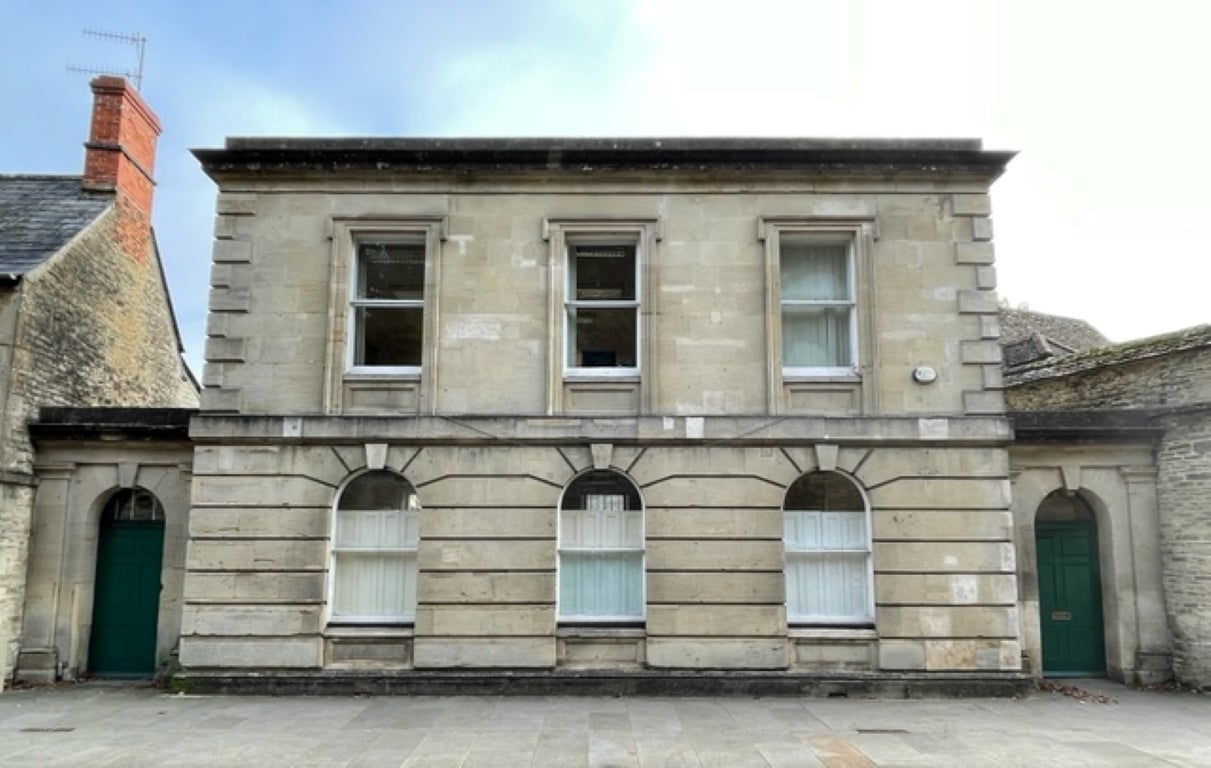
About the Seller
5.0
Platinum Seller
Premium sellers with a 4.7+ rating and 24-hour response times
Established in 1989
1stDibs seller since 2016
4,853 sales on 1stDibs
Typical response time: 2 hours
- ShippingRetrieving quote...Shipping from: Cirencester, United Kingdom
- Return Policy
Authenticity Guarantee
In the unlikely event there’s an issue with an item’s authenticity, contact us within 1 year for a full refund. DetailsMoney-Back Guarantee
If your item is not as described, is damaged in transit, or does not arrive, contact us within 7 days for a full refund. Details24-Hour Cancellation
You have a 24-hour grace period in which to reconsider your purchase, with no questions asked.Vetted Professional Sellers
Our world-class sellers must adhere to strict standards for service and quality, maintaining the integrity of our listings.Price-Match Guarantee
If you find that a seller listed the same item for a lower price elsewhere, we’ll match it.Trusted Global Delivery
Our best-in-class carrier network provides specialized shipping options worldwide, including custom delivery.More From This Seller
View AllSt. Peter's Square Vatican View Early 19th Century Grand Tour Gouache on Paper
Located in Cirencester, Gloucestershire
This captivating gouache on paper painting, dating from the early 19th century, offers a beautifully detailed view of St. Peter's Square in Vatican City, making it a likely relic of ...
Category
Early 19th Century Old Masters Landscape Paintings
Materials
Gouache
$1,099 Sale Price
20% Off
18th CENTURY FRENCH GRAND TOUR WATERCOLOUR - ROMAN MONUMENT ST. REMY PROVENCE
Located in Cirencester, Gloucestershire
Artist/ School: French School, 18th century
Title: The Roman Ruins at St. Remy de Provence, France. Inscribed verso to the frame: ‘Ruins at Roman Monument...
Category
18th Century Old Masters Landscape Paintings
Materials
Watercolor
1800's Italian Grand Tour Oil Painting Theseus Temple Athens in Landscape
Located in Cirencester, Gloucestershire
Theseus Temple, Athens
early 1800's Italian artist
oil on canvas laid over board, framed
framed: 9 x 12.75 inches
board: 6.75 x 10.75 inches
provenance: private collection, UK
condit...
Category
Early 19th Century Old Masters Landscape Paintings
Materials
Oil
$1,759 Sale Price
20% Off
Rome 1878 Classical Roman Architecture Figures at Fountain Signed Watercolor
Located in Cirencester, Gloucestershire
Rome
by Arthur A. Wilkinson (British, c.1860-1930)
signed and dated 1878
watercolor on artist paper , unframed
artist paper : 11 x 17 inches
Provenance: private collection, the Cotsw...
Category
19th Century English School Landscape Paintings
Materials
Watercolor
Early 1800's Italian Classical Landscape with Ancient Ruins & Sea Port Painting
Located in Cirencester, Gloucestershire
The Italian Classical Landscape
Italian artist, circa 1800's
oil on canvas laid on board, framed
framed: 9.5 x 13 inches
board: 7 x 11 inches
provenance: private collection
condition...
Category
Early 19th Century Old Masters Landscape Paintings
Materials
Oil
$1,319 Sale Price
20% Off
Mid 20th Century French Post Impressionist Signed Painting Tall Stone Monument
Located in Cirencester, Gloucestershire
Jean La Forgue (French 1901-1975) signed watercolour on card, unframed
inscribed verso
painting: 22.5 x 19 inches
provenance: the artists estate, France
condition: very good and soun...
Category
Mid-20th Century Post-Impressionist Landscape Paintings
Materials
Watercolor
You May Also Like
Column of Trajan in Rome: A Framed Original 19th C. Etching by Luigi Rossini
By Luigi Rossini
Located in Alamo, CA
This early 19th century etching entitled "Veduta dello scavo del Foro Trajano" was created by Luigi Rossini and included in his publication "Le Antichita Romane" (The Rome of Antiquity), published in Rome in 1823. It depicts the historical victory column of Trajan standing amidst the rubble of broken columns that remain around it.
The etching is presented in a black wood frame with a light brown outer mat and a dark brown inner mat. There are several frame abrasions. The print and mats are in very good condition. The frame measures 27" high, 29.07" wide and 0.5" deep. The print is framed and matted in the identical style as the another etching of an ancient Roman landmark, the Piazza Navona, which is also listed on 1stdibs, see item # LU117326144172. The pair would make an attractive display grouping of Roman architecture. A discount is available for purchase of the pair of prints.
Luigi Rossini (1790-1857) like his predecessors, Giovanni Piranesi (1720–1778) and Giuseppi Vasi (1710-1782), was an architect and artist. Like Piranesi and Vasi, he wanted to glorify the architecture of ancient Rome, which he felt was deteriorating and needed to be documented. Several of the ruins he illustrated have, in fact, since disappeared leaving only his images as a record of their appearance. His images of the grand edifices of the city dramatically depict the power and glory...
Category
1820s Old Masters Figurative Prints
Materials
Etching
Colonna Traiana - Lithograph on Paper by Pierre Duflos - 19th Century
Located in Roma, IT
Colonna Traiana is an original modern artwork realized in the first years of the XIX Century by the French artist Pierre Duflos (1742-1816).
Original ...
Category
19th Century Figurative Prints
Materials
Lithograph
Column of Antoninus Pius, Rome Italy. Jacobs Lauro 17th century engraving
Located in Melbourne, Victoria
Lauro produced a series of engravings of the ancient monuments of Classical Rome with detailed descriptions in Latin below.
180mm by 240mm (plate mark)...
Category
Early 17th Century Old Masters Landscape Prints
Materials
Engraving, Etching
Trajan's Pillar - Etching - 19th century
Located in Roma, IT
Trajan's Pillar is a modern artwork realized in 19th Century.
Black and white etching.
Good conditions
Includes frame: 27 x 31 cm
Category
19th Century Modern Mixed Media
Materials
Paper, Etching
Piazza del Popolo con Obelisco Egizio
By Giuseppe Vasi
Located in Fairlawn, OH
Piazza del Popolo con Obelisco Egizio
Etching, 1752
Signed in the plate lower left (see photo)
From: Della Magnificenze di Roma Antica e Moderna ( The Magnificense of Ancient and Modern Rome) , (1747-1761)
Volume II, The Main Squares and Obelisks, columns and other ornaments, 1752, Plate No. 21
Della Magnificenze di Roma Antica e Moderna_ (1747-61), a collection of 238 plates that was published in ten volumes. Vasi recorded all types of architecture and organized these images of contemporary Rome by subject, with each volume representing a different category of architecture. This comprehensive project provides one of the most complete views of eighteenth-century Rome
Condition: Excellent
Image/Plate size: 8.25 x 12.63 inches
Sheet size: 11 x 15 7/8 inches
Vasi was Giovanni Battista Piranesi’s teacher. Piranesi (1720-1778) entered Vasi’s studio as an apprentice at age 20 c. 1740. Piranesi left Vasi’s employment after stabbing Vasi over the perception that Vasi was withholding secrets of the etching process.
Giuseppe Vasi was an Italian engraver and painter born and trained in Sicily. He received a classical education in his hometown of Corleone and trained as a printmaker in nearby Palermo, perhaps under the tutelage of the etchers Antonino Bova and Francesco Cichè. He moved to Rome in 1736, already an established printmaker, and spent most of his career documenting the urban landscape of the city in engravings. Through his patron, the politically and culturally influential Cardinal Troiano Acquaviva d’Aragona, Vasi met other artists working in Rome, such as Sebastiano Conca, Ferdinando Fuga, and Luigi Vanvitelli. He was also influenced by his predecessors, including Giovanni Paolo Panini, Giovanni Battista Falda...
Category
1750s Old Masters Landscape Prints
Materials
Etching
View of the Forum Romanum - Watercolor by Giuseppe Costantini - 1870s
Located in Roma, IT
View of the Forum Romanum is an original modern artwork realized by the Italian painter Giuseppe Costantini (Nola, 1843 - Naples, 1893) in the seco...
Category
1870s Modern Figurative Drawings and Watercolors
Materials
Oil, Watercolor
More Ways To Browse
Century Grand Tour
19th Century Italian Art
Italian 19th Century Painting
19th Century Gouache
Antique Forum
Italian Gouache
Old Master Italian Landscape
Antique View Master
Roman Forum
Column Trajan
19th Century Italian Grand Tour Gouache Painting
Landscape With Cows
Painting 19th Century Sailing Ship
Piazza San Marco
Picnic Painting
Rocky Shore
Ronald Brown
Venetian Painters
